Intimate Enigmas
Posted on | May 11, 2013 | Comments Off on Intimate Enigmas
Calabi Gallery presents “Intimate Enigmas,” recent abstract stone sculptures by Easton. With their meticulously finished surfaces and exquisitely organic forms Easton’s sculptures are a sensual delight. More information is provided below images.
The gallery is also displaying abstract paintings and original prints by various artists including Charles Howard, Claire Falkenstein, Robert McChesney, and Paul Beattie. As usual an assortment of works by gallery artists will also be on view. Please click here to view this gallery selection.
Please click on thumbnails for larger views and more information on Easton.
“Intimate Enigmas”
“Sculpture In the Dark”
Human beings are amazing creatures: we breathe, eat and drink, and live until something interrupts the process. We rely on our bodies, without truly knowing how they function.
I sculpt. I take blocks of stone, usually marble or alabaster, and reduce the mass of the block, alter and polish the surfaces, and wind up with something called sculpture. Sometimes the piece shouts out to me its name and being. Sometimes I impose a thought on its form. In truth I cannot tell how I arrive at a form, other than naming certain choices and directions. I create abstracts. They are not recognizable things; they are shapes that stir thoughts about form and images, at best, but they are not cats or horses or nymphs or even trees.
The pieces that have been selected for this show represent my work for the past year and a half. Some of that work has been to “finish” pieces that I began years ago, but which needed bases, something I usually prefer to avoid but which are necessary for purposes of stability or presentation. One piece was “finished in 1989 (in Italy) but which I always felt needed a base for stability and appearance.
Other work for the last year and a half (a time following a year and a half of flux and without a studio) has concentrated on finishing pieces I had started previously or on generating smaller new works dictated by the rising costs of materials.
Formally, I’ve given myself permission to work with greater freedom and more uncertainty as to what will evolve. I usually work directly with the block of material, without drawing out or modeling a form. Even if I have a preconceived idea, I let the progress of the work lead me where it seems most desirable. I do, however, favor certain relationships, motifs, and images. This past bit I’ve tried to accept more variety, more uncertainty, as things evolve. I’ve decided to leave some questions unanswered, for the viewer to deal with the questions.
Within this “openness” I still strive for beauty, the beauty of natural forms– bodies, tree limbs, waves–but I do not define it as limitedly as previously.
A Rationale for Abstract Art:
Representational art tells you what is and therefore in essence what to think. Abstract art releases you from that constraint and lets you think what you will.
I carve stone (and, occasionally, wood). I create non-representational pieces; I prefer to call them abstracts. My pieces are generally sensuous and pleasing to the eye. The forms I tend to employ generally follow the lines of nature, the curves and continuities we see in trees and sea shells and bodies. My pieces do not represent things that do exist in our world, but echo aspects of that world.
Born at the end of World War II, in rural eastern Pennsylvania where George Washington slept his way through the Revolutionary War (the signs say so), my first love (after the obvious nest of family) was the Nature of fields and woods and stream and their inhabitants. My second and third (in some order) were books and, unfortunately, TV, both of which, along with childhood illnesses, distracted me from a healthy sense of reality and supplanted it with romantic make-believe versions of how the world is.
After a youth directed at an academic career, first in science and then in the humanities (I even was going to become a monk in a cloistered monastery at one point), I chose hands over head and “became” an “artist,” first as an avocation, but quickly as a profession, a career. Because I approached my career with romantic hopes, I have spent most of my sculpting years working at a variety of “day jobs” to provide for the necessities of life while I produced sculpture when I could.
I view my pieces as vital, formal compositions. What determines their success, to me, is a quality of ‘rightness’ that should shine forth: the piece should be able to stand by itself and be believable. My goal is to create an idiosyncratic image that will yet be acceptable to and responded positively to by someone examining the work.
Easton


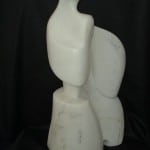
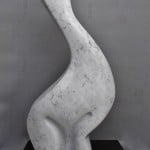
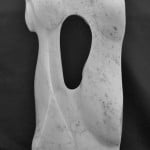
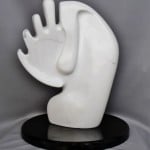
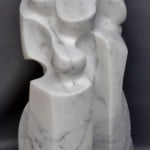
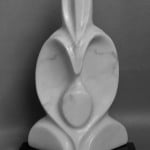
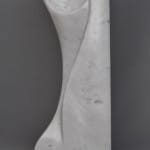
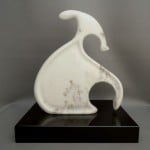
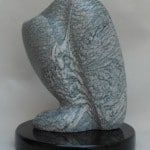
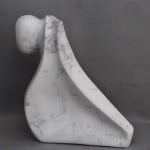
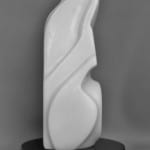
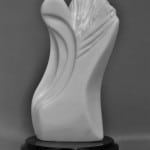
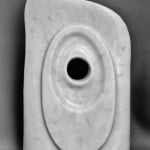
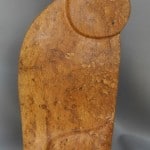
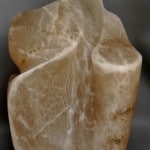
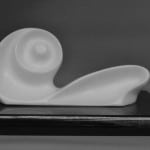
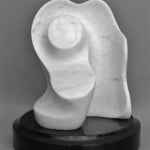
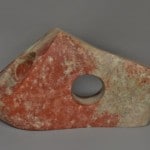
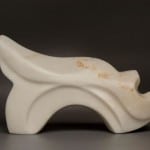
 And many more
And many more